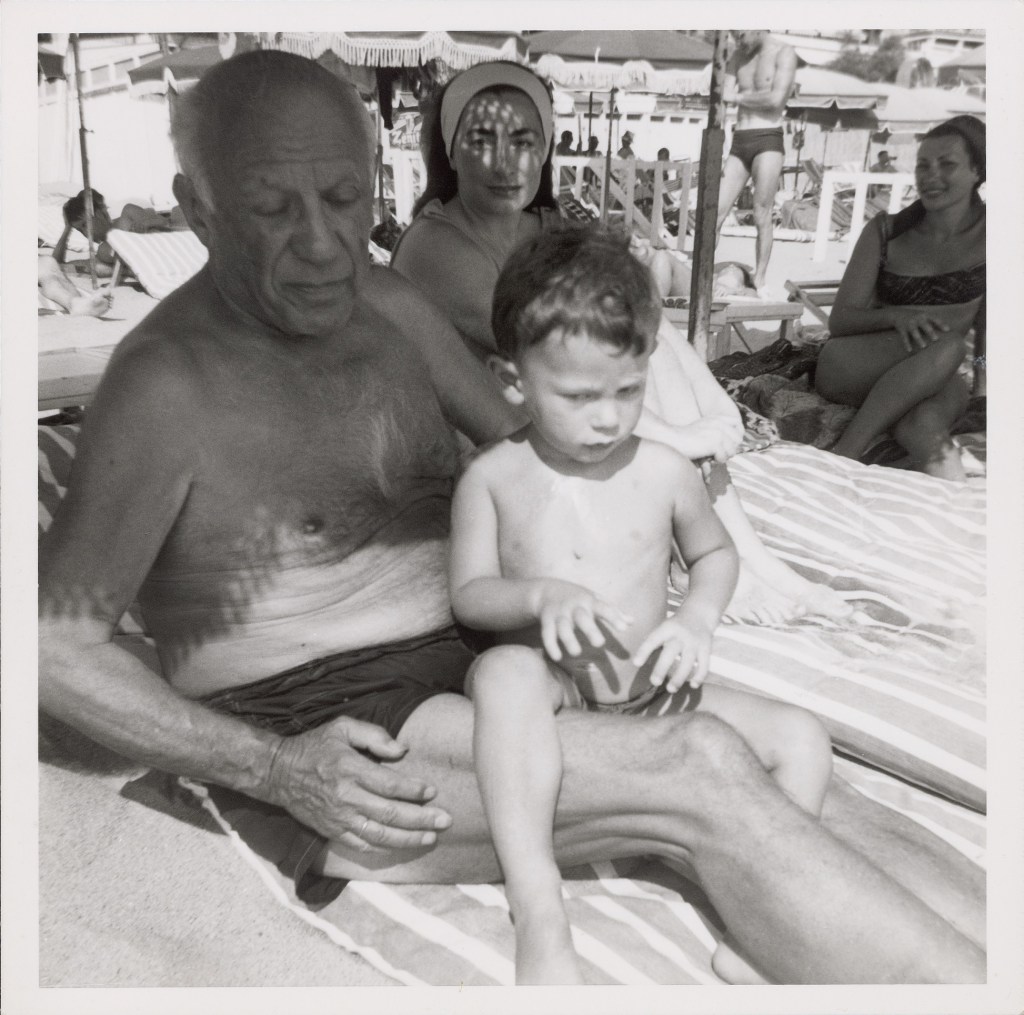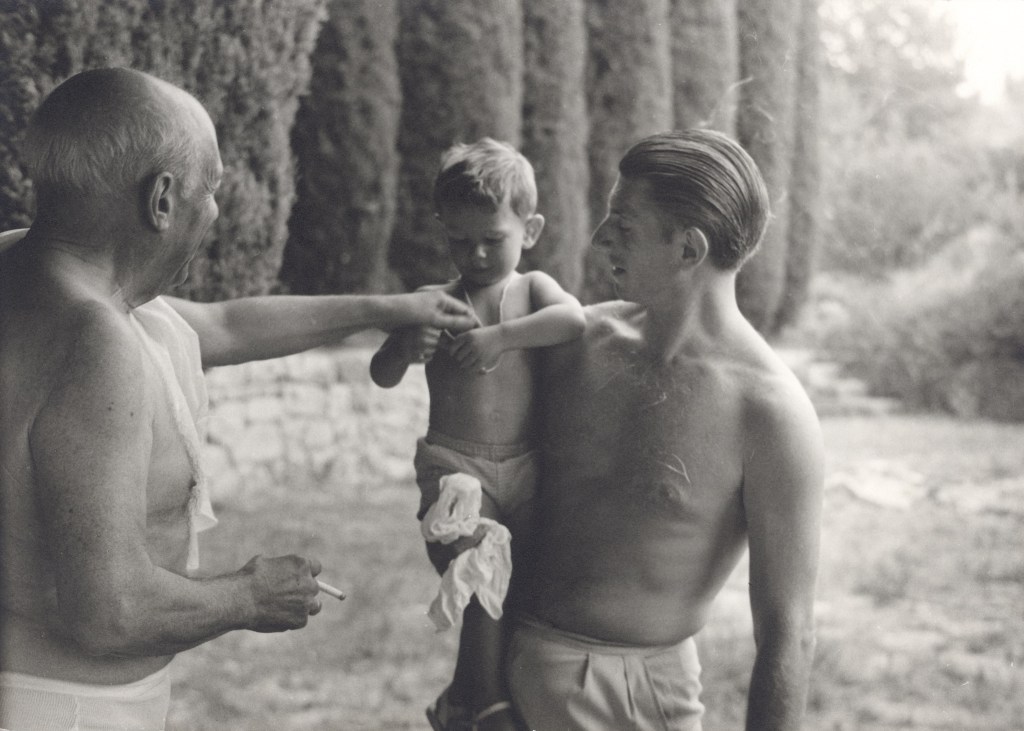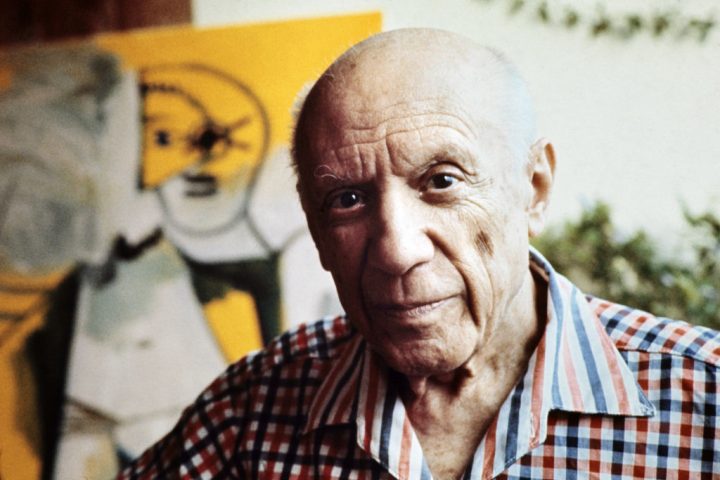In the sunlit courtyard of the Picasso Museum in Málaga, Bernard Ruiz-Picasso is telling me about his grandfather, the greatest artist of the 20th Century. ‘He’s very inspiring – a powerful artist and thinker,’ says Bernard. ‘He was super-cool, and also super tough.’
Not so long ago, such an uncontentious compliment would have seemed entirely unremarkable. Yet in today’s censorious climate, few things are so clear-cut. For a century, Picasso has been lauded – the finest draughtsman since Michelangelo – but now he’s a figure of fierce controversy. Fifty years since his death, could we be about to witness the cancellation of the man who personified modern art?
It seems Picasso’s relationships with women were frequently controlling, and sometimes abusive
When Picasso died in 1973 at the grand old age of 91, the only controversial thing about him were his artworks. After several decades as the most famous artist on the planet, many art lovers still recoiled from his work. It was a mark of his genius for constant innovation that, even in the 1970s, a man who started painting in the 1890s was still seen as avant-garde. His pictures never lost the capacity to shock and startle, however many times you saw them. As his grandson, Bernard, says, ‘You can go back again and again.’
Pablo Picasso reinvented figurative art and confounded every artistic convention. But the backlash of recent years against him has nothing to do with his astounding artworks – one of which, Femme à la montre, fetched a £113 million at auction this week – and everything to do with the way he treated the women in his life.
‘Was Picasso a misogynist?’ pondered the Guardian in 2015. Earlier this year, the Brooklyn Museum mounted an exhibition, co-curated (‘from a feminist angle’) by stand-up comic Hannah Gadsby, called ‘It’s Pablo-matic’. In her stand-up show in 2018, Gadsby claimed Picasso suffered from ‘the mental illness of misogyny.’ Two years ago, protesters paraded around the Picasso Museum in Barcelona, wearing T-shirts bearing the slogan ‘Abuser of Women.’ The BBC’s new Picasso documentary labours under the tediously sententious title The Beauty and The Beast.
To be sure, there’s a good deal of evidence that Picasso treated some of the women in his life pretty badly. ‘He submitted them to his animal sexuality,’ wrote Marina Picasso, in her book Picasso – My Grandfather. ‘He tamed them, bewitched them, ingested them, and crushed them onto his canvas. After he had spent many nights extracting their essence, once they were bled dry, he would dispose of them.’
It seems his relationships with women were frequently controlling, and sometimes abusive. His talented mistress, Dora Maar, suffered a nervous breakdown. The mother of two of his children, Françoise Gilot, claimed he held a lit cigarette against her cheek.
As a rich and famous man, Picasso held all the cards, and as he became richer and more famous the age gap between him and his lovers grew. When he started seeing Marie-Thérèse Walter (the mother of his daughter, Maya), she was 17 and he was 45. When he started stepping out with Françoise Gilot, she was 21 and he was 61. When he hooked up with Jacqueline Roque, his second wife (and, subsequently, his widow), she was 27 and he was 72. ‘Picasso’s feelings for women oscillated between extreme tenderness and appreciation on the one hand and violent hatred on the other, the mid-point being dislike if not contempt,’ wrote his peerless biographer, Patrick O’Brian.
Bernard Ruiz-Picasso remembers his grandfather very differently, a wise and amiable old man who played with him on the beach when he was a toddler, who loved to watch the circus and the wrestling with him on TV. ‘He was simple, he was kind.’ Patrick O’Brian noted his ‘great capacity for affection.’
Mindful of the poverty of his youth in Paris, he gave generously to former lovers who’d fallen on hard times. Sure, he wasn’t blameless, but he never tried to hide his faults. ‘His art is really his biography,’ says Bernard. ‘He said everything about himself, even the bad moments – when he painted my grandmother, Olga, totally hysterical, screaming – and maybe he had a part in that.’ It’s all there in the paintings. His art was an open book.
‘Art is not chaste,’ said Picasso. ‘Or if it is chaste, it is not art.’ Art history is littered with the stories of great artworks made by flawed and fallen men, yet from a purely artistic point of view, do any of their moral failings really matter? Caravaggio was a murderer. Should we remove his paintings from art galleries? Is it really all that difficult to separate the artist from the art?
It’s sadly symptomatic of our strident age that we now feel compelled to judge artists as moral arbiters, as if artistry and morality were somehow intrinsically intertwined. Should the knowledge that Marie-Thérèse Walter and Jacqueline Roque both killed themselves change our view of Picasso’s portraits? Maybe we’d be better off knowing nothing about them at all.

Wandering around Málaga, Picasso’s birthplace, you’re reminded of the perils of imposing contemporary values upon artists from different times and places. Picasso was born way back in 1881, when attitudes towards women were positively archaic, particularly here in Andalusia. ‘Can you imagine?’ says Bernard. ‘In the 1880s, it was very, very different.’
It’s sadly symptomatic of our strident age that we now feel compelled to judge artists as moral arbiters
Picasso grew up in a bourgeois home of modest means – a cramped apartment on a busy square, now an atmospheric museum. Although his father, an undistinguished artist, was relatively liberal by 19th century standards, like virtually every other boy of his background, Pablo was weaned in a household where women had scant education, few rights, and bore all the burden of childrearing, as well as every other domestic chore. For married and unmarried men, a visit to the local brothel wasn’t so different from a visit to the local pub today. Men regarded women as maidens, matriarchs or whores. A woman was, to all intents and purposes, the property of her husband. Looking back, it’s a wonder that Picasso didn’t turn out even more chauvinistic.
To supplement his meagre income as a jobbing artist and art teacher, Picasso’s father, José, moonlighted as the curator of Málaga’s unassuming art museum. Thanks to Bernard Ruiz-Picasso, José’s great-grandson, that sleepy gallery, housed in an antique building in the heart of town, has now been transformed into Málaga’s spectacular Picasso Museum.
Sitting here today, in the fierce sunshine, talking to Bernard about his famous grandfather, it feels as if a wheel has turned full circle. Pablo went away to make his name and became the world’s most feted artist, and now his priceless paintings adorn the walls of this restored museum, which has revived his hometown’s fortunes – a catalyst for Málaga’s unlikely renaissance as a cultural capital.
Pablo Picasso made his home in France and after the Spanish Civil War (in which he supported the Republican government against Franco’s Fascist insurgents), he vowed he’d not revisit his native Spain while Franco remained in power. Sadly, Franco outlived him by two years, and so Picasso never returned home.
Franco died in 1975, as did Bernard’s father, Paulo (Pablo’s eldest child) and so Bernard, born in 1959, inherited a significant amount of Picasso’s art collection when he was still a teenager. With his mother, Christine (Paulo’s widow) he set about reuniting Picasso with his forsaken Spanish homeland.
In 1993, Bernard and Christine opened their Picasso Museum here in Málaga, in José’s old gallery, filled with a selection of their Picasso paintings. Twenty years ago, this wasn’t an obvious location for a new art gallery. As Bernard says, ‘Malaga was pretty poor at the time.’ The collection is a riveting survey of Picasso’s eclectic career, from Cubism to Classicism, and all the other isms inbetween, reinvigorating every genre, making every artistic style his own. Especially poignant are Picasso’s childhood portraits of his son, Bernard’s father, Paulo, painted in the first tender flush of fatherhood.

A short walk away is the Museo Casa Natal, the flat where Picasso was born and raised. There are keepsakes from his early days, faded family photos, stiff and formal, but the most interesting thing is what it reveals about Picasso’s relationship with his father.
Legend has it that José was a talentless hack and his son was a child prodigy, but this wasn’t strictly true. José was a proficient teacher who gave his gifted son an invaluable foundation. He inspired him to follow in his footsteps. He taught him everything he knew.
He was a decent artist, too. One of his workaday paintings had a profound effect upon little Pablo. ‘He once made a huge picture of a dovecote crowded with pigeons,’ remembered Picasso, in later life. ‘Hundreds of pigeons!’ This picture is now hanging in the Casa Natal, but even though the painting is impressive, it only features eight pigeons, not the hundreds Picasso recalled.
Picasso was also prone to hyperbole when it came to describing his own artworks. ‘I have never done children’s drawings – never,’ he declared. ‘I remember one of my first drawings. I was maybe six, or even less. In my father’s home there was a statue of Hercules with his club, and I drew it, but it wasn’t a child’s drawing – it was a real drawing.’ That drawing survives, virtually the only artwork that remains from his childhood here in Málaga, and what’s remarkable about it is how unremarkable it is. Picasso wasn’t six when he drew it. In fact, he was already nine. Tentative and stilted, it’s exactly what you’d expect from an average student of that age.
In 1891, when Pablo was ten, José got a job as an art teacher in Galicia and moved his family away from warm and sunny Málaga to La Coruña, in wet and windswept northern Spain. The family spent several miserable years there. It was there that Pablo began to paint. In 1895, José brought the family back to Málaga for a few months, en route to a new job in Barcelona, and during their short stay Pablo, now aged 14, painted an old fisherman, a portrait of astonishing maturity and sophistication. José gave Pablo his paintbrushes. He knew he had nothing more to teach his son.
In the bustling plaza outside the Casa Natal there is a statue of Picasso, old and bald, sitting on a bench. Sightseers sit here and pose for selfies alongside him, but in fact this effigy is a polite fiction.
After that final summer here, Picasso only made a few more fleeting visits, the last time when he was 19. Barcelona became his new hometown, and then Paris. After he became a star, he never saw Málaga again. Yet after all these years, Andalucia still feels central to his story – its savage bullfights, its cruel machismo, its atavistic Moorish roots. ‘A man belongs to his country forever,’ said Picasso.
Meanwhile, back at the Picasso Museum, the queue of visitors stretches right round the block. These visitors don’t really care whether Picasso was a misogynist. They know great art is amoral. They’re here to see the man who ripped up the rule book, who confounded the art establishment, and created some of the most arresting and enduring images the world has ever seen.






Comments